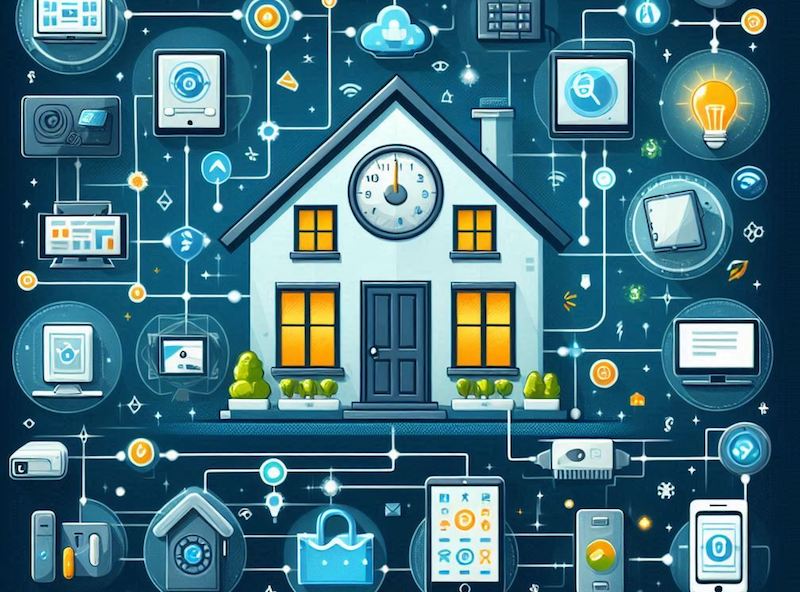Matter is an open source, IP-based protocol for the smart home that is designed to be a unifying standard to help people create a reliable and secure internet of things (IoT) ecosystem in their home. It is also designed to help smart home device manufacturers by allowing them to build products based on a single protocol instead of products for each smart home ecosystem including Amazon Alexa, Apple HomeKit, Google Home, Samsung and SmartThings.
The Connectivity Standards Alliance (CSA) is a global organization that develops and promotes open standards for IoT. Its mission is to enable seamless connectivity and interoperability among IoT devices and systems. The CSA creates and evolves standards like Zigbee and Matter, which allow products from different manufacturers to securely connect and interact with each other. It also provides certification programs to validate compliance with its specifications, ensuring interoperability and building consumer trust.
I believe that the CSA, and its industry partners, have been doing a very good job developing the Matter protocol. They have recently released version 1.3 of the Matter protocol specification (see the article I wrote on that here) and key manufacturers have already started announcing their plans to release product updates to support it.
However, the CSA’s focus with recent releases of the Matter protocol has been to add support for more types of IoT devices and features specifically related to the devices already supported by Matter. For example, v1.3 added support for electric vehicle charges; water management devices, including smart water valves, leak detectors, and rain sensors; microwave ovens; ovens; cooktops; vent hoods; laundry dryers; and energy usage reporting by devices such as smart plugs.
I believe that the CSA also needs to focus on is how to integrate Matter devices with the millions of other smart home devices that are already being used by consumers.
Companies like SwitchBot and Aqara have, for their own products, taken the approach of adding bridging technology to their hubs. Bridging allows the company’s non-Matter compatible products that are connected to their hubs, to be viewed as Matter devices by other systems on the homeowner’s network. This has allowed these companies to quickly move forward in the support of the Matter protocol. It also enables them to save a great deal of money by not having to redesign their existing products to support Matter. Finally, it allows them to avoid having to recertify each product when they enhance it to include new features through software updates.
For organizations that sell smart home hubs, however, there is no financial incentive to make the significant investment to include bridge technology into their hubs that would do the same for all the Zigbee, Z-Wave, and other products that homeowners have integrated with their hubs. In addition, given the wide range of support that these hubs provide for third-party smart home devices, bridging all these devices to Matter would be a monumental task.
So, the question remains, what can be done to allow Matter devices to integrate seamlessly with all the existing smart home devices that homeowners have been buying for many years and integrated into their smart homes using smart home hubs?
In addition, there has been a focus by smart home manufactures to make Matter-compatible smart wall switches, smart plugs, smart thermostats, and other similar devices. Soon we will start to see wall mounted touch panels, handheld remote controls, and similar devices that will be used by consumers to control their smart homes. How will these control points for the smart home create a seamless user experience with both new Matter-compatible devices and the existing devices that homeowners have already purchased and are connected to their smart home hubs?
I believe that “triggers” are needed as a way to integrate a broad spectrum of non-Matter compatible devices into the Matter ecosystem. In my mind a trigger is a virtual device that would exist in the Matter ecosystem but not in the physical world. A trigger is similar to a scene in that there is no physical scene device. A trigger could be commissioned/created on a Matter controller, such as Apple Home, Alexa, SmartThings, or Google Home. Just like a Matter-compatible wall switch, a trigger could be paired with any other Matter controller or smart home hub that supports Matter. A trigger also could be tied to any action on a controller/hub that it is paired with, like turning on a non-Matter wall switch or executing a routine that performs a series of actions and can execute conditional logic. This conditional logic could include only taking an action at a specific time of day, taking an action based on reported conditions from an environmental sensor, and more. It could be actuated in the same way that a Matter-compatible switch is turned on, a Matter-compatible thermostat is set to heat mode, etc.
So, a trigger provides for bridging of non-Matter compatible devices to the world of Matter in a limited way that will be economical for hub manufacturers to implement. It provides a way for people to leverage the significant investment they have made in smart home technology before the development of Matter. And, triggers would be a way to integrate touch panels, handheld remote controls, and other control points into the world of Matter beyond just providing for a button on one of them to initiate an action on a Matter-compatible device or to initiate a scene.








